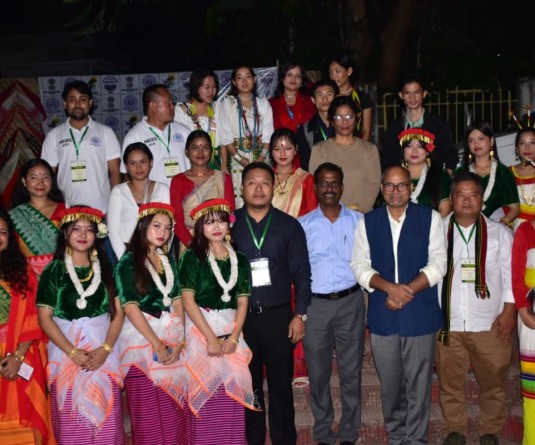
New Delhi, May 6 (PTI) A new book seeks to highlight the uniqueness of Assam's medieval polymath Srimanta Sankaradeva's multifaceted contributions in various fields and how he shaped the sociocultural fabric of the state.
"Essays on Srimanta Sankaradeva" by Sanjib Kumar Borkakoti, who has carried out extensive research on Assamese hagiographies, particularly Sankaradeva and different aspects of Sankari culture, contains several analytical articles, a few of them that have already been published in different journals or websites.
These articles deal with the Vaishnavite saint's contributions, which are quite relevant for knowing Assam's remarkable contributions in the spiritual and literary ecosystems, says Borkakoti.
"The social structure as well as the literature and culture of Assam were deeply enriched by him. His contributions pervade all the spheres," he writes in the book, published by Authorspress.
Though many diverse issues mentioned in the book apparently seem not to be linked together, they actually are interlinked as Sankaradeva worked in all these areas, according to the author.
"The diverse aspects also reflect on the lives and culture of Assam, the characteristic contributions of its people as shaped by Srimanta Sankaradeva. Study of the contributions of Srimanta Sankaradeva gives us a holistic understanding about the Assamese society," the book says.
It features the institutions created by Sankaradeva and also does comparative studies. Matters like aesthetics, feminism, philosophy, sustainable development etc, as seen by Sankaradeva, are covered in the analyses.
Borkakoti, however, rues that strangely very little is known about Sankaradeva outside Assam and his pivotal contributions have been almost forgotten for lack of research.
He says Sankaradeva should be reckoned as an unusual genius among all saints of India.
"The ideology of 'Eka Sarana' (meaning refuge in one entity alone) preached by him is not found in any other religious leader of India. It was a unique contribution of Srimanta Sankaradeva to the spiritual lore of this great nation," argues Borkakoti.
Sankaradeva was a pioneer in the resurgence movement of the Indian regional languages and can be considered the first playwright in all the modern Indian languages.
He propagated the Ankiya plays which comprised dance, music and story-telling. Just like dance, he created a new classical school of music, in association with his foremost disciple, Madhavadeva. This school, which came into being with the songs Bargeet composed by them, is termed as Sankari music.
"This Sankari school of music was developed even before the other two classical schools of music in India, the Hindustani school and the Carnatic school, were evolved," says Borkakoti.
A new school of painting was also developed by Sankaradeva, just like his dance and music.
"He initiated this new form of painting with his epoch-making drama "Chihna-Yatra", which was enacted in 1468 AD at Tembuwani. Incidentally this happened to be the first play in any modern Indian language," the book says, adding it launched the regional drama movement in medieval India.
"Sankaradeva depicted seven 'Vaikuntha' (heaven) in scrolls, which were used as backdrops there. It was the first recorded instance of Sankaradeva's painting work and it laid the foundation of the Sankari art form.
"This new school of painting found expressions in the illustrations of his manuscripts, in the costumes and masks worn by the actors in his plays, and in the illustrations of the altar Guruasana placed in the unique prayer-house, Kirttanghar," the book says.
It also discusses in detail about the xatras and how these Vaishnavite institutions created by Sankaradeva stand out as unique models of self-sufficiency.





